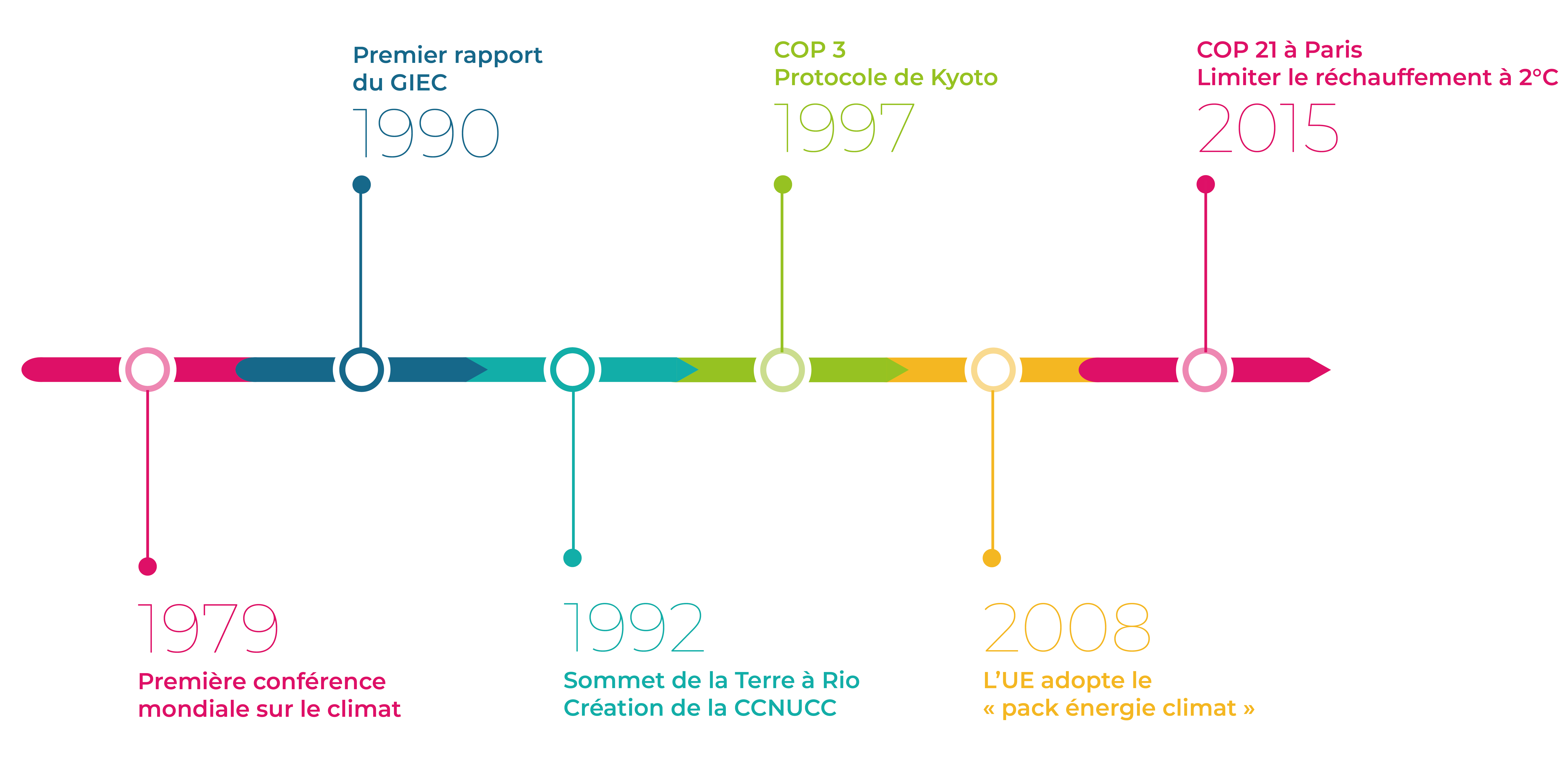Climate negotiations

International climate negotiations began in 1979 with the first World Climate Conference. However, it was the creation of the United Nations Framework Convention on Climate Change (UNFCCC) in 1992 that allowed the importance and anthropogenic causes of climate change to be officially recognised.
Since then, Climate Change Conferences (COP) have been held regularly to bring State Parties together and enable them to discuss the Convention’s implementation and negotiate new commitments to reduce greenhouse gas emissions and adapt to climate change.

